Full Stack Development
Why Full Stack Development is Important & Its Skills
Introduction
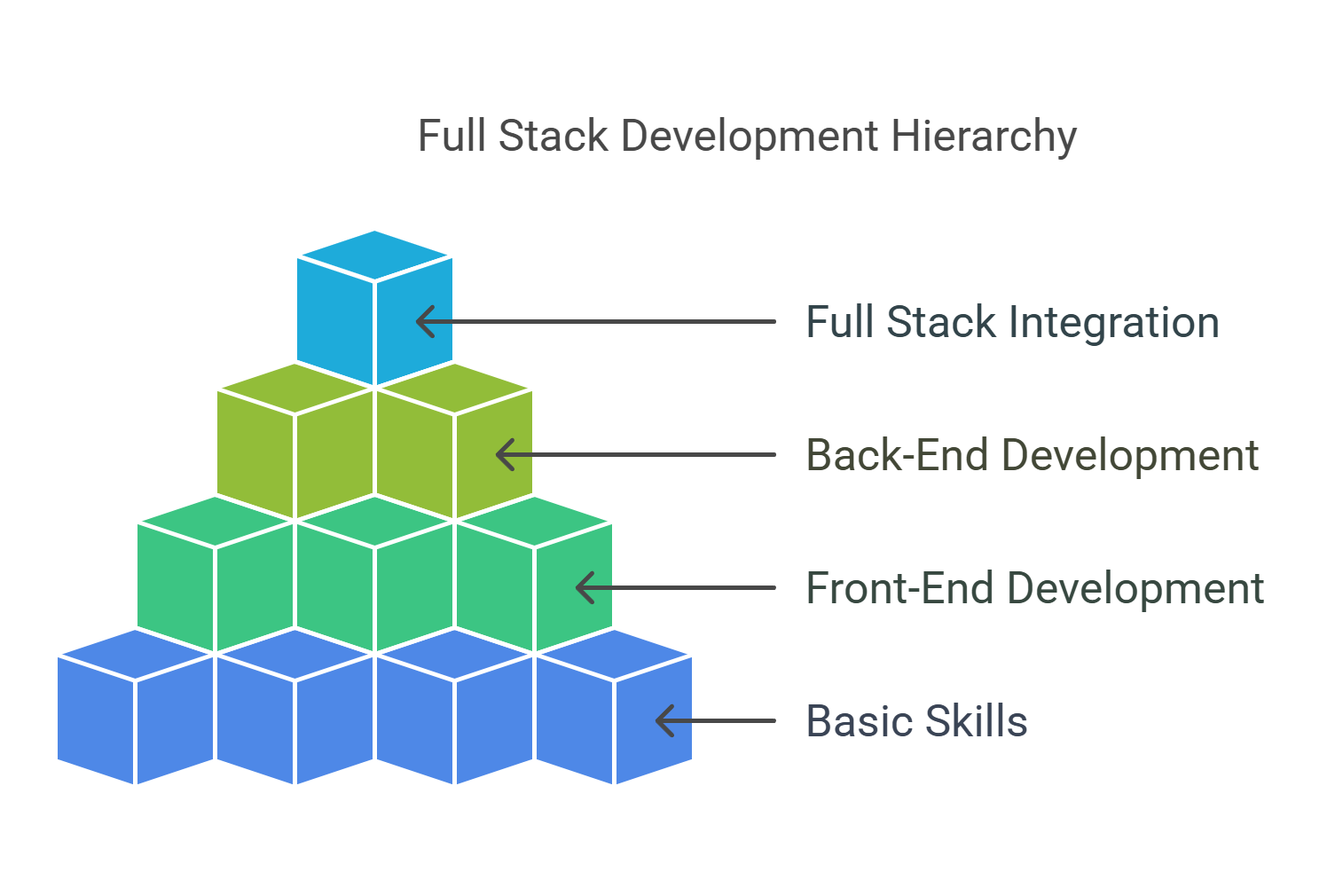 Full Stack Development is now one of the most in-demand skills in the technology sector. As companies more and more depend on online platforms, it is crucial to have developers who can manage both frontend and backend development. In this article, we will discuss why Full Stack Development is crucial, its major skills, and the pros and cons of following this career path.
Full Stack Development is now one of the most in-demand skills in the technology sector. As companies more and more depend on online platforms, it is crucial to have developers who can manage both frontend and backend development. In this article, we will discuss why Full Stack Development is crucial, its major skills, and the pros and cons of following this career path.
What is Full Stack Development?
Full Stack Development means possessing the capability to develop both the frontend and backend of a web application. A Full Stack Developer understands several technologies, which enables them to develop end-to-end web solutions.
Why is Full Stack Development Important?
The importance of the Full Stack Development are:
- Full Stack Developers can do both frontend and backend, cutting down on the requirement of multiple experts.
- It is more economical for companies to hire Full Stack Developers to save costs.
- Companies look for developers who can perform various roles effectively.
- Full-stack Developers get a holistic view of project development, which helps in better coordination and solving problems.
- One developer working on various aspects accelerates the development process.
- The ability of Full Stack Developers to act as a middleman between frontend and backend teams ensures smoother project execution.
Key Skills Needed for Full Stack Development
For Frontend Technologies:
- HTML – Web page backbone.
- CSS – Designing layouts and styles.
- JavaScript – Adds interactivity and dynamic aspects.
- React.js, Angular, or Vue.js – Contemporary frontend frameworks for enhanced UI/UX.

For Backend Technologies:
- Node.js, Python, Ruby, or PHP – Server-side scripting and logic application.
- Express.js, Django, or Laravel – Backend development simplifying frameworks.
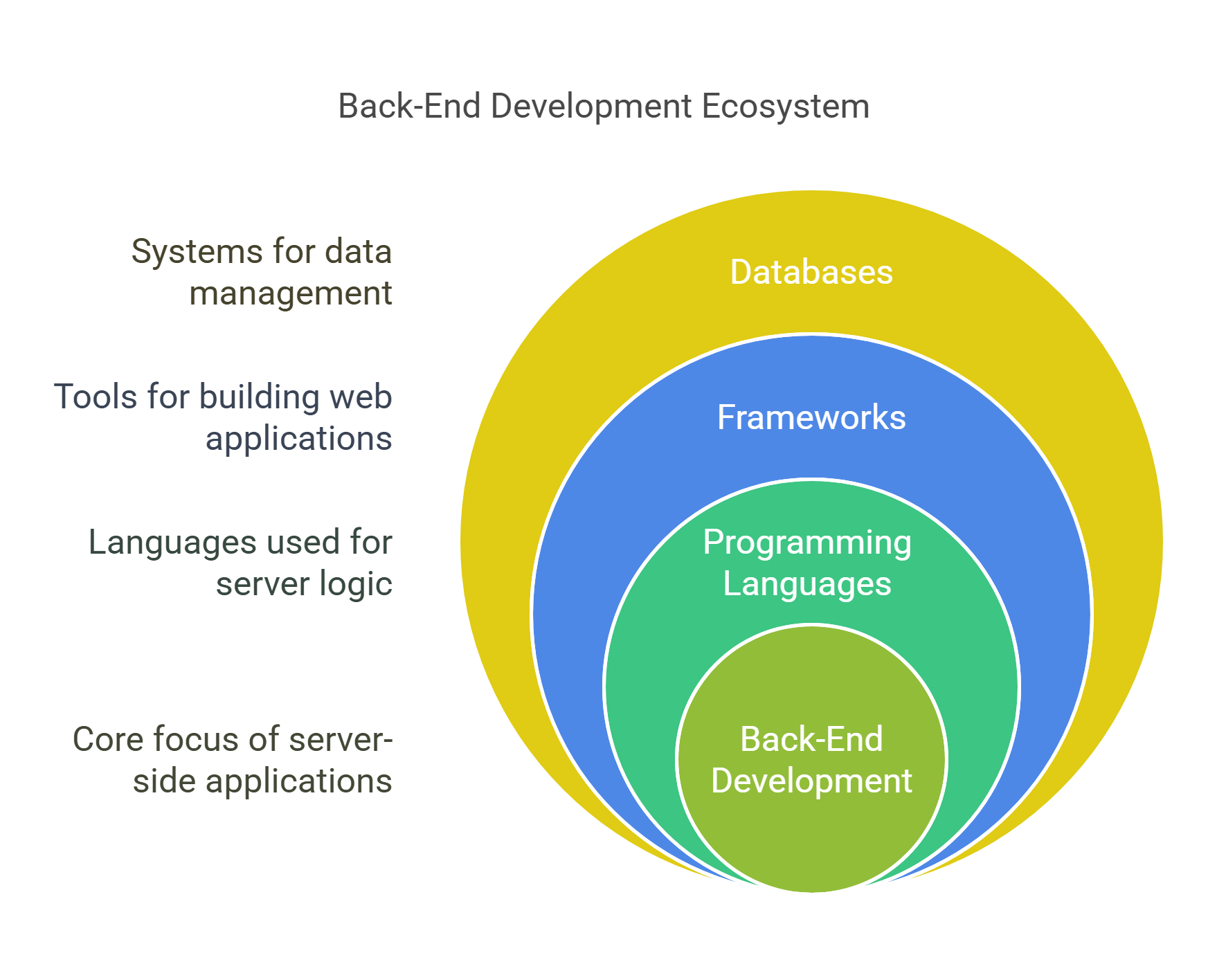
For Database Management:
-
MySQL – Relational database management.
-
MongoDB – NoSQL database for high-scale applications.
-
PostgreSQL – Advanced relational database management system.

We Must-have Tools like:
-
Git & GitHub – Version control and collaboration.
-
Docker – Containerization for application deployment.
-
CI/CD (Continuous Integration/Continuous Deployment) – Automates code deployment and testing.
-
REST & GraphQL APIs – Facilitates communication between frontend and backend.
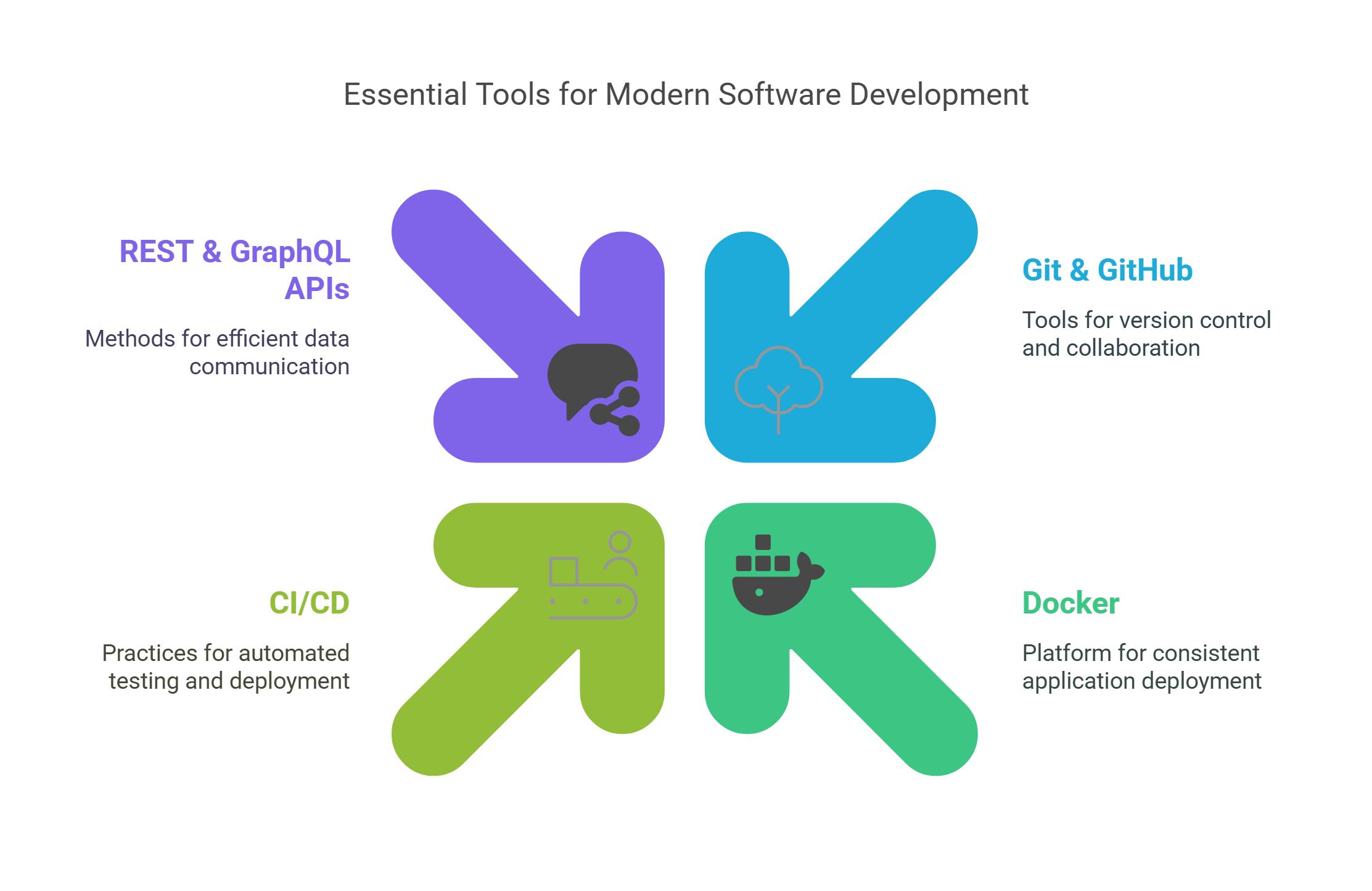
Benefits of Acquiring Full Stack Development Skills
-
Flexibility in Career: Full Stack Developers are versatile and can perform different roles in a development team, making them more employable.
-
Comprehensive Knowledge: Both client-side and server-side development knowledge results in improved decision-making and problem-solving skills.
-
Entrepreneurial Benefit: For potential entrepreneurs, Full Stack Development skills allow for the development of end-to-end applications without any outside help.
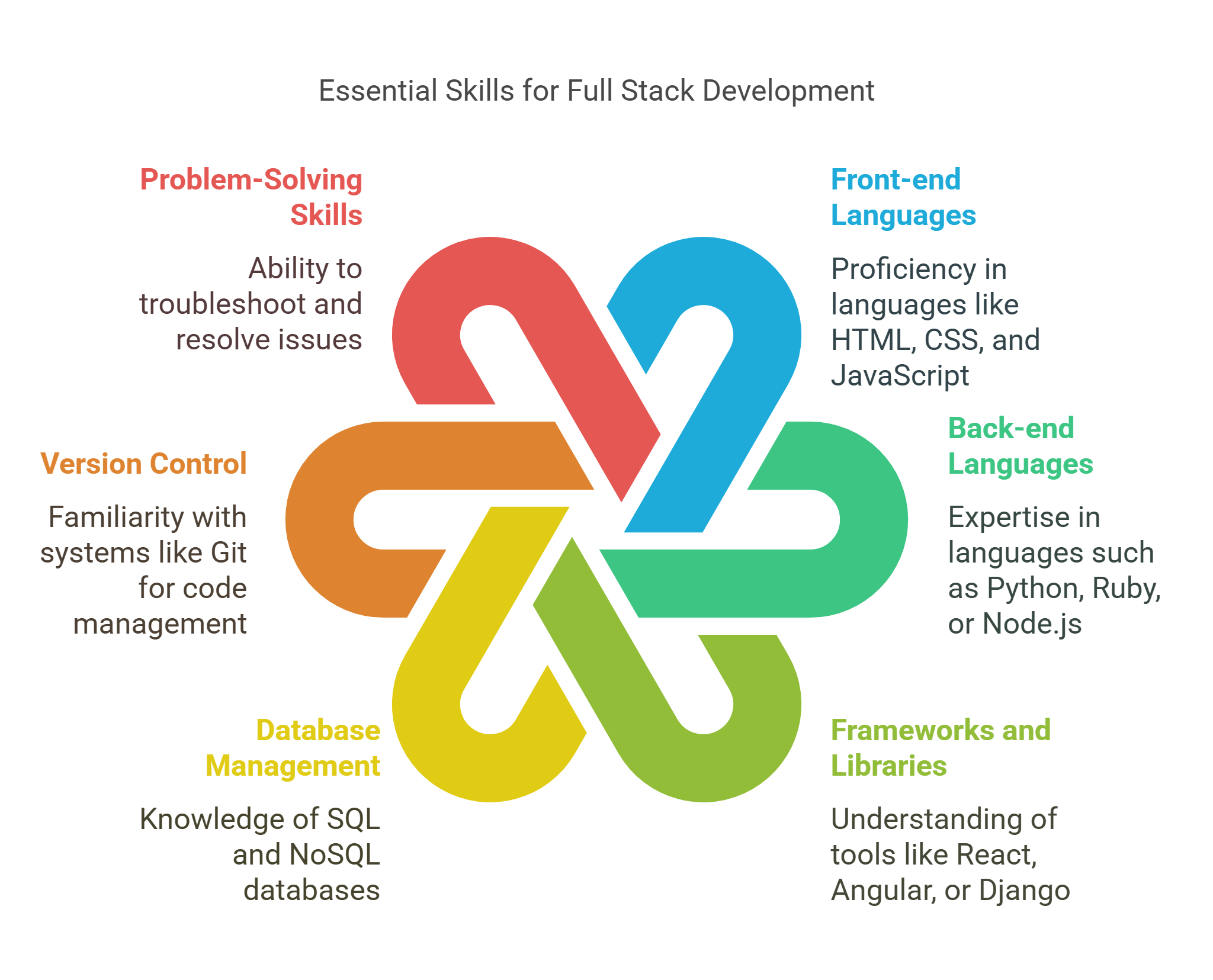
Advantages of Full Stack Development
-
Greater Job Prospects – Organizations search for developers who possess varied skill sets.
-
Greater Salary Scope – Multi-skilled developers earn higher salaries.
-
Improved Project Management – Familiarity with both frontend and backend results in streamlined workflow.
-
Freelance & Startup Opportunities – Full Stack Developers can freelance or start their own startups.
Drawbacks of Full Stack Development
-
High Learning Curve – Needs to be an expert in various technologies.
-
Overwhelming Workload – It might be difficult to manage frontend, backend, and database.
-
Jack of All Trades, Master of None – Shallow knowledge of some things can sometimes result from balancing expertise in many domains.
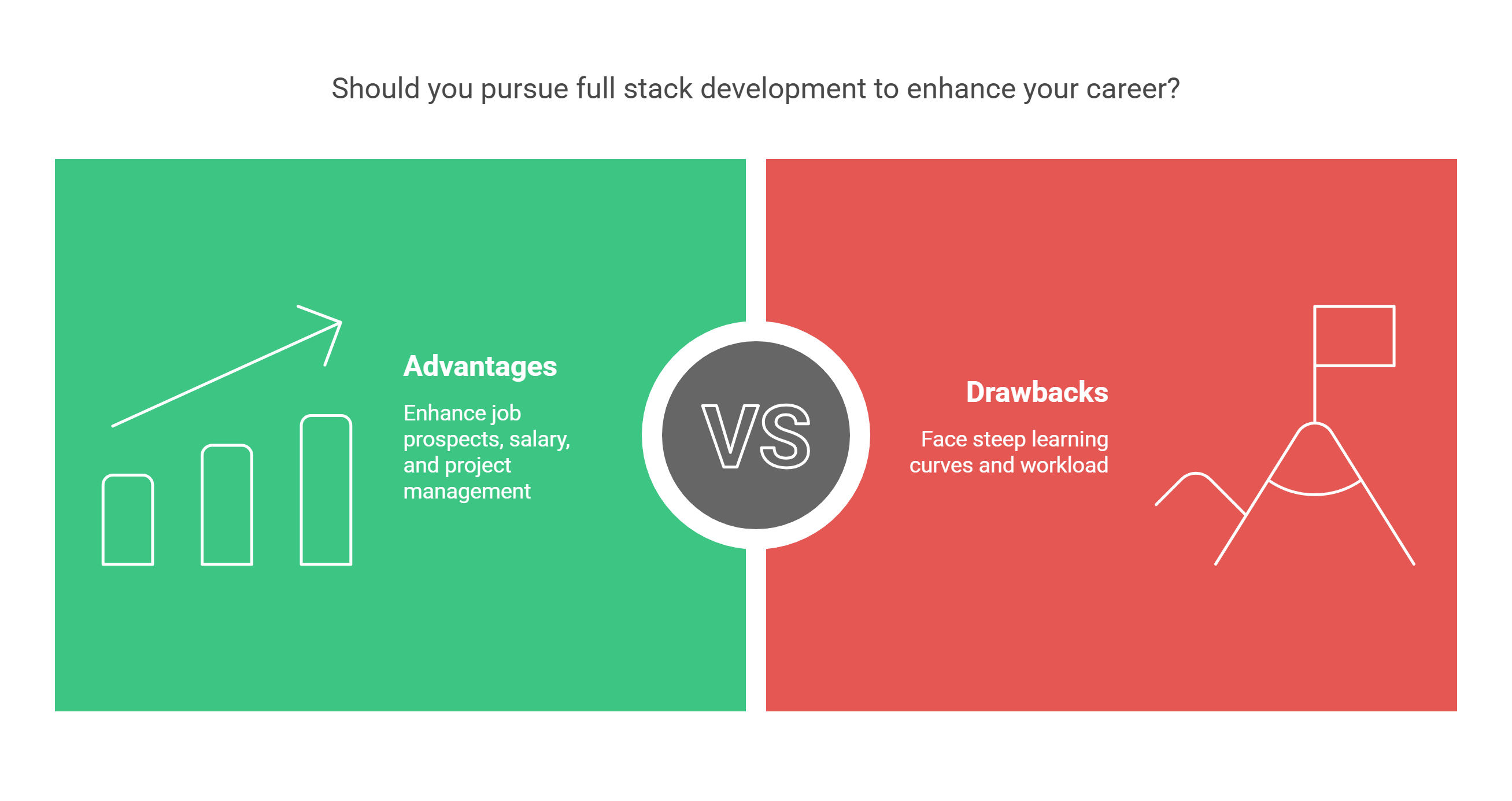
How to Use Full Stack Development
Full Stack Development is utilized to create complete web applications using frontend, backend, and database systems. It allows developers to create dynamic and scalable web solutions for business organizations and users.
How to Work on Full Stack Development
To work as a productive Full Stack Developer, utilize these well-timed steps:
- Plan Your Project
- Determine the scope, purpose, and requirements of the application so that there is a well-defined development roadmap.
- Setup the Development Environment
Install some tools that are needed:
- Code editor (VS Code, Sublime Text),
Version control (Git & GitHub),
Runtime environments (Node.js, Python),
Database systems (MySQL, MongoDB),
- Design the Frontend
Use the following technologies to design a user-friendly interface:
-
HTML, CSS, JavaScript – Core web development languages.
-
Frameworks like React, Angular, or Vue.js – For dynamic frontend development.
- Build the Backend
Use server-side logic with:
-
Node.js, Python, or Ruby – For handling business logic and request processing.
-
Express.js, Django, or Laravel frameworks – For easing backend development.
- Set up the Database
Choose the appropriate database and connect with:
-
Relational Databases – MySQL, PostgreSQL (structured data storage).
-
NoSQL Databases – MongoDB, Firebase (scalable, flexible data handling).
- Implement Authentication & Security
Secure user data and limit access with:
-
JWT (JSON Web Tokens)
-
Data encryption, role-based access control, and HTTPS implementation
- Test the Application
Validate functionality, security, and performance with:
-
Unit Testing – Tests individual components (Jest, Mocha).
-
Integration Testing – Verifies smooth interaction between frontend and backend.
-
End-to-End Testing – Simulates actual user interactions.
- Deploy the Application
Publish your application live using:
-
Cloud Platforms – AWS, Heroku, Vercel, Netlify.
-
CI/CD Pipelines – Automate deployment using GitHub Actions or Jenkins.
- Keep & Scale the Application
Monitor performance, fix bugs, and add features with:
-
Application Monitoring Tools – New Relic, Datadog.
-
Scalability Strategies – Load balancing, microservices architecture.

Conclusion
Full Stack Development is a critical component of contemporary web development, providing a combination of flexibility, effectiveness, and overall insight into the development process. Though it has some challenges, the benefits tend to outweigh the costs, and it is a highly useful skill set in the current technology environment.
To get a graphical representation of how Full Stack Development and the related skills are important, use Canva’s AI tools to create an interactive infographic. The tools can help design the layout, choose the right graphics, and make sure that the information is conveyed in a clear and effective manner.
